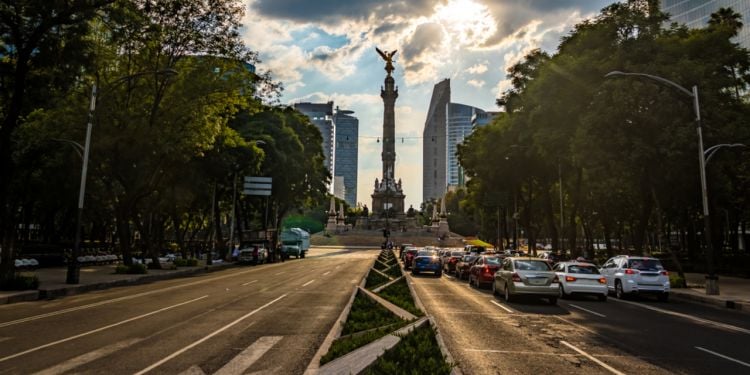Transports in Mexico City

Traffic congestion is a very big issue in Mexico City, as you would expect in a place with a population of over 12 million, but this doesn't mean that you can't get around in a timely fashion. You just have to plan carefully by looking up the less busy routes around where you would like to commute. There's plenty to explore in this city, and public transportation, in particular, serves as a great companion to checking out points of interest.
Peak hours in Mexico City
If you are using public options, make yourself aware of what your options are. If you figure out a way to avoid peak times, such as commute hours such as getting get ahead of the morning rush between 7 and 9 am and 6 and 8 pm, it can be very efficient.
What you have to keep in mind is that there are primary and secondary modes of transportation in Mexico City.
Cars in Mexico City
The first includes the car, which many families have more than one of, the subway and the Metrobus, the latter of which runs the length of the longest avenue in the city, Insurgentes. The reasons why spend many people in Mexico City rely so heavily on their car is that it ensures security as well as being able to reach your destination that is often not near public transportation. Especially at night, it isn't ideal to have to walk too far to find a bus stop that will send you in the right direction.
Subway in Mexico City
The fastest way to get somewhere is by taking the subway, and it is quite extensive. Trains run from North to South and East to West, and they all feature transfer points such as Chabacano, Pino Suarez, Calderas, Hidalgo, Pantitlán. Many have stations that are right by major landmarks like the Monument of the Revolution, Zocalo and
Another great thing about public transportation is that it usually costs around 5 pesos, so you don't have to worry about it affecting your budget.
Taxis in Mexico City
Taxis are very convenient and aren't nearly as expensive as in other countries. The fare starts at 15 pesos and a half hour trip can cost around 200 pesos. You should take some precautions when taking them, most especially at late hours. As a general rule, you should inquire about the route that you will be taking, and if it is too far from main streets, you should request one that isn't.
Cycling in Mexico City
As with many major cities these days, there are rentable city bikes that you can take from any designated locking area that are usually situated just off of the sidewalk. You need to register at the designated modules located in the Roma, Nápoles, and Juárez neighbourhoods. You will require proof of ID such as a passport and a debit or credit card. Many young people and even professionals use them regularly and assert that they are very convenient and time-saving. They definitely have upsides, but you should be extremely careful when riding around on busy parts of the city. Accidents are fairly common, and you should always wear protection.
Travelling to the South and outside Mexico City
If you want to the Southern part the city, you can even take the subway's line two all the way South to its terminus, Tasqueña and then just hop on the light train. Families should head out to this area as it is where the ecological jewel of the region, Xochimilco can be found. There you can ride on boats around man-made waterways whilst taking in the lush natural splendour.
If you need to travel to the State of Mexico, Mexico City metropolitan area, head to train station Buenavista in the North, and take the train to places such as Tlalnepantla and Cuautitlán.
Useful link:









